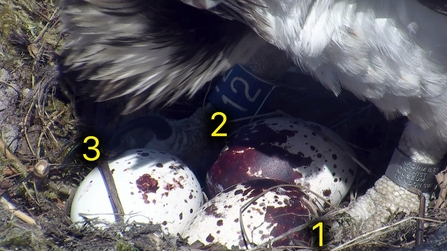Female ospreys take just under three days to produce an egg.
So, for a three egg clutch there will be a six day time gap between the first and last egg, April 14th - 20th this year for Glesni. This photo shows the 2017 three egg clutch in the order they were laid.

